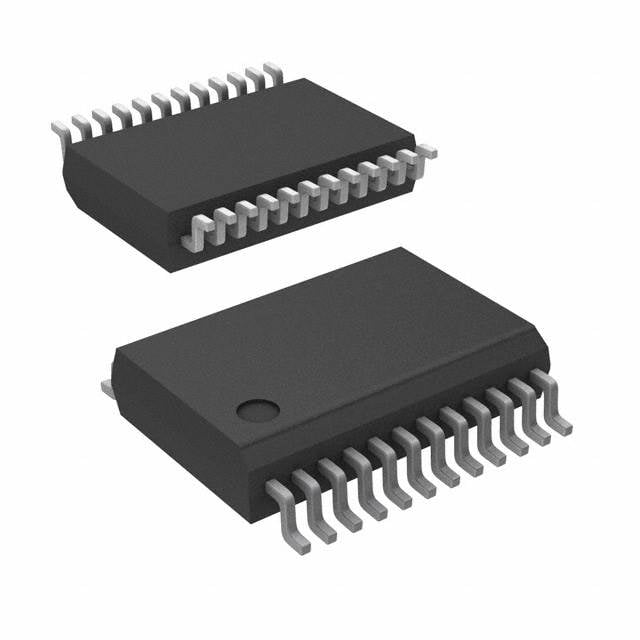ICGOO在线商城 > 集成电路(IC) > 接口 - 驱动器,接收器,收发器 > ADM208EARSZ-REEL
- 型号: ADM208EARSZ-REEL
- 制造商: Analog
- 库位|库存: xxxx|xxxx
- 要求:
| 数量阶梯 | 香港交货 | 国内含税 |
| +xxxx | $xxxx | ¥xxxx |
查看当月历史价格
查看今年历史价格
ADM208EARSZ-REEL产品简介:
ICGOO电子元器件商城为您提供ADM208EARSZ-REEL由Analog设计生产,在icgoo商城现货销售,并且可以通过原厂、代理商等渠道进行代购。 ADM208EARSZ-REEL价格参考。AnalogADM208EARSZ-REEL封装/规格:接口 - 驱动器,接收器,收发器, 全 收发器 4/4 RS232 24-SSOP。您可以下载ADM208EARSZ-REEL参考资料、Datasheet数据手册功能说明书,资料中有ADM208EARSZ-REEL 详细功能的应用电路图电压和使用方法及教程。
| 参数 | 数值 |
| 产品目录 | 集成电路 (IC)半导体 |
| 描述 | IC TXRX RS-232 5V 0.1UF 24SSOPRS-232接口集成电路 15kV Protct 230kBPS Transceiver IC |
| 产品分类 | |
| 品牌 | Analog Devices Inc |
| 产品手册 | |
| 产品图片 |
|
| rohs | 符合RoHS无铅 / 符合限制有害物质指令(RoHS)规范要求 |
| 产品系列 | 接口 IC,RS-232接口集成电路,Analog Devices ADM208EARSZ-REEL- |
| 数据手册 | |
| 产品型号 | ADM208EARSZ-REEL |
| PCN组件/产地 | |
| 产品种类 | RS-232接口集成电路 |
| 供应商器件封装 | 24-SSOP |
| 关闭 | No |
| 其它名称 | ADM208EARSZ-REEL-ND |
| 功能 | Transceiver |
| 包装 | 带卷 (TR) |
| 协议 | RS232 |
| 双工 | 全 |
| 商标 | Analog Devices |
| 安装类型 | 表面贴装 |
| 安装风格 | SMD/SMT |
| 封装 | Reel |
| 封装/外壳 | 24-SSOP(0.209",5.30mm 宽) |
| 封装/箱体 | SSOP-24 |
| 工作温度 | -40°C ~ 85°C |
| 工作温度范围 | - 40 C to + 85 C |
| 工作电源电压 | 4.5 V to 5.5 V |
| 工厂包装数量 | 1000 |
| 接收器滞后 | 650mV |
| 接收机数量 | 4 Receiver |
| 支持协议 | RS-232 |
| 数据速率 | 230kbps |
| 最大工作温度 | + 85 C |
| 最小工作温度 | - 40 C |
| 标准包装 | 1,000 |
| 激励器数量 | 4 Driver |
| 电压-电源 | 4.5 V ~ 5.5 V |
| 电源电流 | 13 mA |
| 类型 | 收发器 |
| 系列 | ADM208E |
| 驱动器/接收器数 | 4/4 |

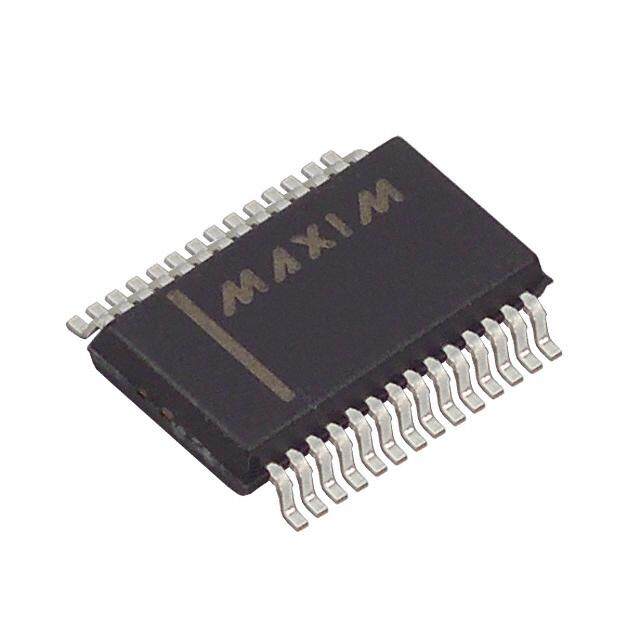

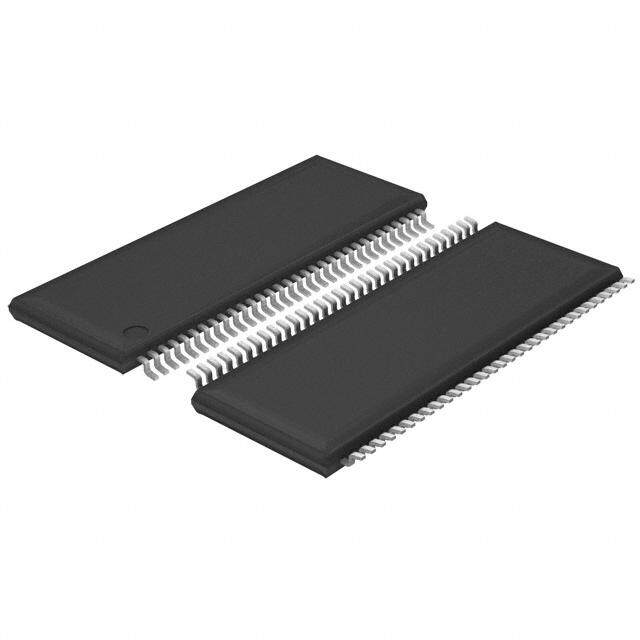
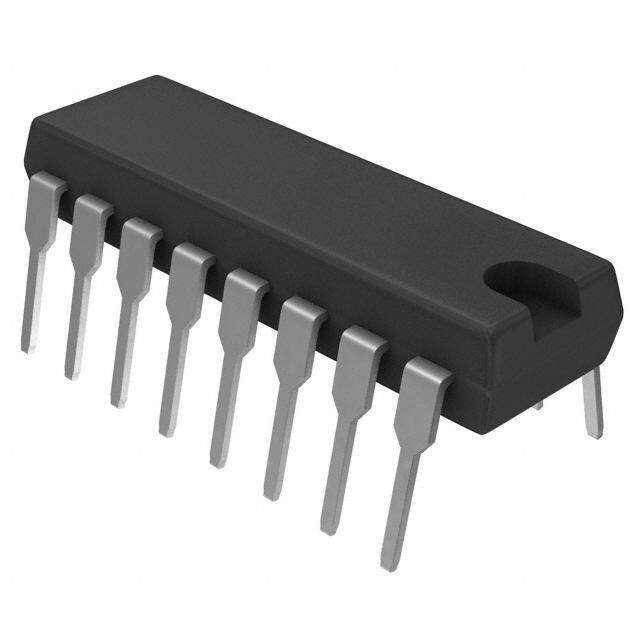

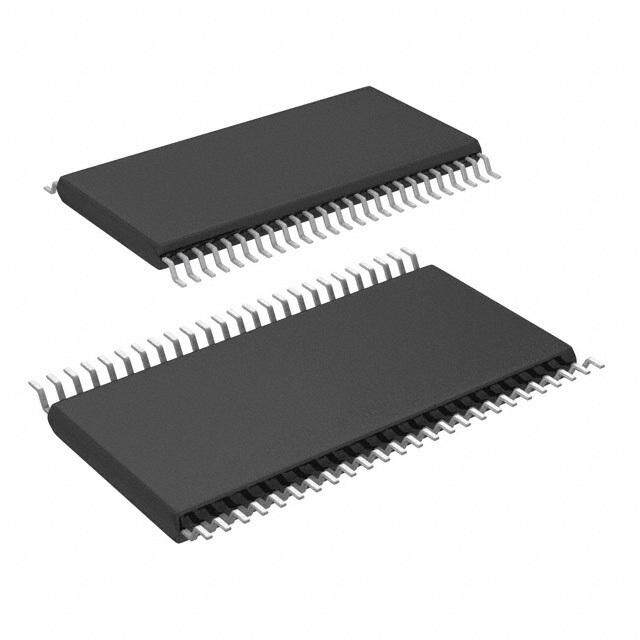



- 商务部:美国ITC正式对集成电路等产品启动337调查
- 曝三星4nm工艺存在良率问题 高通将骁龙8 Gen1或转产台积电
- 太阳诱电将投资9.5亿元在常州建新厂生产MLCC 预计2023年完工
- 英特尔发布欧洲新工厂建设计划 深化IDM 2.0 战略
- 台积电先进制程称霸业界 有大客户加持明年业绩稳了
- 达到5530亿美元!SIA预计今年全球半导体销售额将创下新高
- 英特尔拟将自动驾驶子公司Mobileye上市 估值或超500亿美元
- 三星加码芯片和SET,合并消费电子和移动部门,撤换高东真等 CEO
- 三星电子宣布重大人事变动 还合并消费电子和移动部门
- 海关总署:前11个月进口集成电路产品价值2.52万亿元 增长14.8%
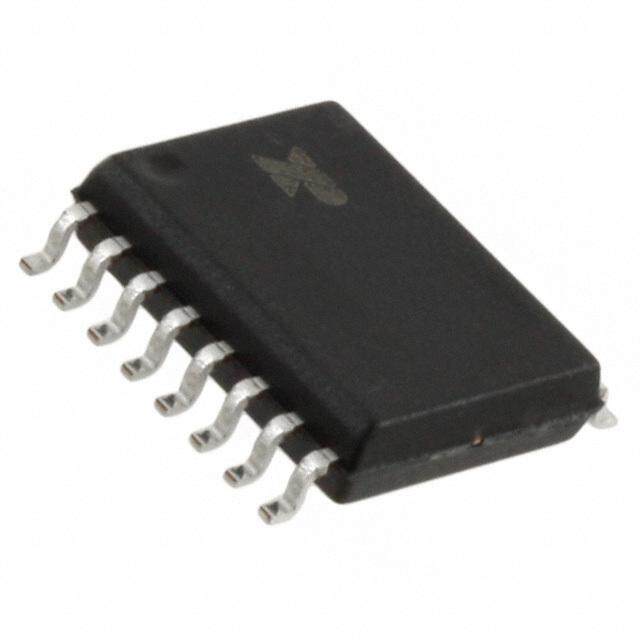


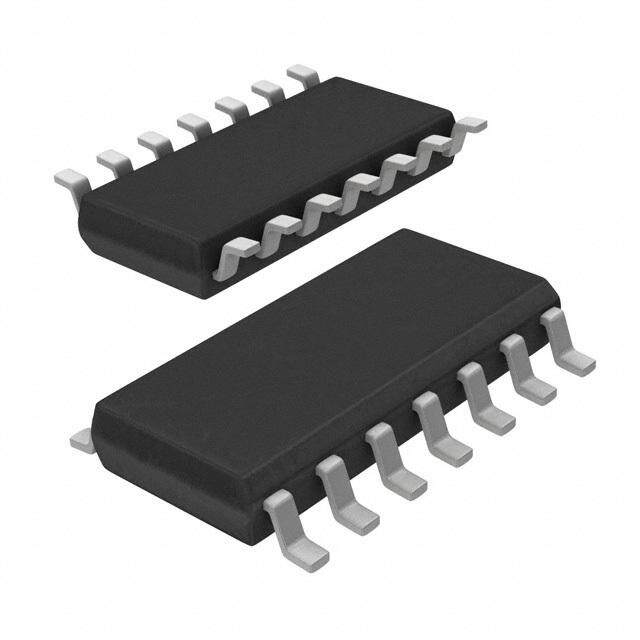
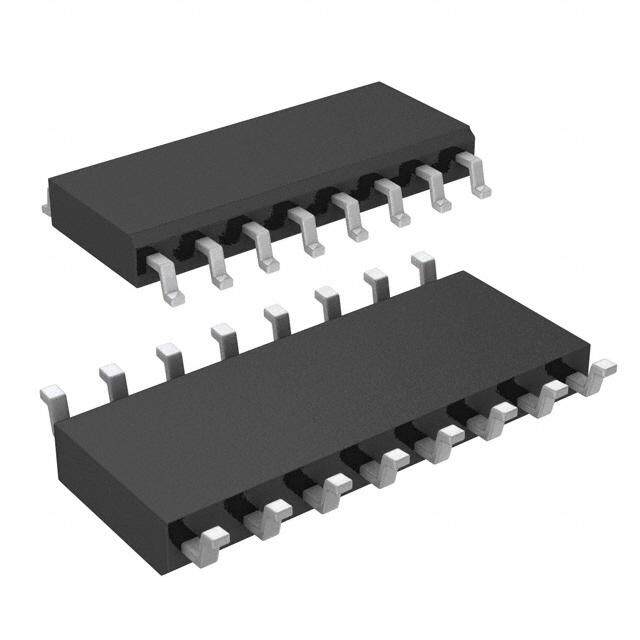
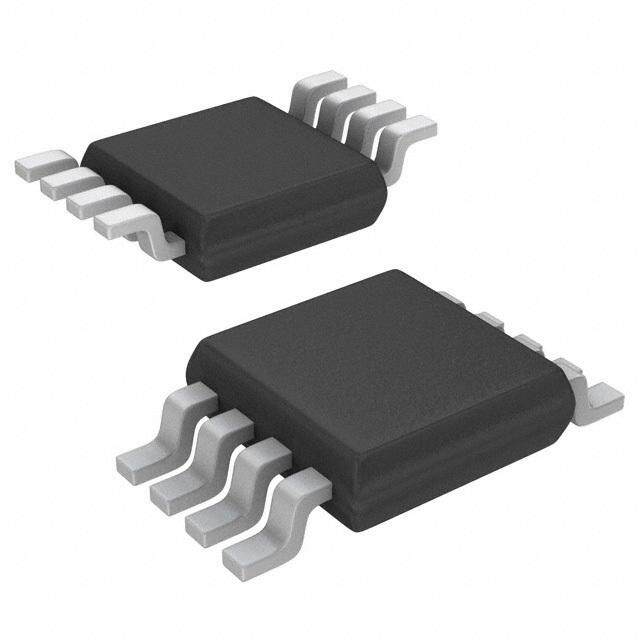
PDF Datasheet 数据手册内容提取
EMI/EMC-Compliant, ±15 kV ESDProtected, RS-232 Line Drivers/Receivers ADM206E/ADM207E/ADM208E/ADM211E/ADM213E FEATURES CONNECTION DIAGRAM Complies with 89/336/EEC EMC directive 5VINPUT ESD protection to IEC 1000-4-2 (801-2) + 12 C1+ +5VTO+10V VCC 11 + Contact discharge: ±8 kV 0.110µVF 14 C1– DVOOULTBALGERE V+ 13 +06..13µVF 0.1µF Air-gap discharge: ±15 kV Human body model: ±15 kV 0.1µF+ 15 C2+ +1V0OVLTTOA–G1E0V V– 17 0.1µF 10V 16 C2– INVERTER +10V EFT/burst immunity (IEC 1000-4-4) Low EMI emissions (EN 55022) T1IN 7 T1 2 T1OUT Eliminates need for TransZorb® suppressors 2Si3n0g kleb 5p sV d paotwa erart seu gpupalyra nteed TTILN/PCUMTOSS1 TT23IINN 260 TT23 31 TT23OOUUTT ROSU-T2P32UTS Shutdown mode 1 μW Plug-in upgrade for MAX2xxE T4IN 21 T4 28 T4OUT Space saving TSSOP package available R1OUT 8 R1 9 R1IN APPLICATIONS Laptop computers R2OUT 5 R2 4 R2IN Notebook computers TOTULT/CPMUOTSS R3OUT 26 R3 27 R3IN RINSP-U23T2S2 Printers Peripherals R4OUT 22 R4 23 R4IN Modems R5OUT 19 R5 18 R5IN GENERAL DESCRIPTION EENN((AADDMM221113EE)) 24 ADM211E/ 25 SSHHDDNN((AADDMM221113EE)) The ADM2xxE is a family of robust RS-232 and V.28 interface GND ADM213E 10 devices that operate from a single 5 V power supply. These pro- danudct as raer ec osmuiptalibalne tf owri tohp tehrea tEioUn dinir ehcatrisvhe eolnec etlreicctarlo emnvaigrnoentmice nts 12IINNTTEERRNNAALL450k0ΩkPΩUPLULL-DLO-UWPNRRESEISSITSOTORR O ONNEAEACCHHTTRLS/-C2M32O ISN PINUPTU.T. 00068-001 compatibility (EMC) (89/336/EEC). The level of emissions and Figure 1. immunity are both in compliance. EM immunity includes ESD charge pump, all transmitters, and three of the five receivers are protection in excess of ±15 kV on all I/O lines (IEC 1000-4-2), disabled. The remaining two receivers remain active, thereby fast transient burst protection (IEC 100044), and radiated allowing monitoring of peripheral devices. This feature allows immunity (IEC 1000-4-3). EM emissions include radiated and the device to be shut down until a peripheral device begins conducted emissions as required by Information Technology communication. The active receivers can alert the processor, Equipment EN 55022, CISPR 22. which can then take the ADM213E out of the shutdown mode. All devices fully conform to the EIA-232-E and CCITT V.28 Operating from a single 5 V supply, four external 0.1 μF specifications and operate at data rates up to 230 kbps. Shut- capacitors are required. down and enable control pins are provided on some of the The ADM207E and ADM208E are available in 24-lead PDIP, SSOP, products (see Table 1). available in 28-lead SSOP, TSSOP, and SOIC_W packages. All The shutdown function on the ADM211E disables the charge products are backward compatible with earlier ADM2xx products, pump and all transmitters and receivers. On the ADM213E the facilitating easy upgrading of older designs. Table 1. Selection Table Model Supply Voltage Drivers Receivers ESD Protection Shutdown Enable Packages ADM206E 5 V 4 3 ±15 kV Yes Yes RW-24 ADM207E 5 V 5 3 ±15 kV No No N-24-1, RW-24, RS-24, RU-24 ADM208E 5 V 4 4 ±15 kV No No N-24-1, RW-24, RS-24, RU-24 ADM211E 5 V 4 5 ±15 kV Yes Yes RW-28, RS-28, RU-28 ADM213E 5 V 4 5 ±15 kV Yes (SHDN)1 Yes (EN) RW-28, RS-28, RU-28 1 Two receivers active. Rev. E Information furnished by Analog Devices is believed to be accurate and reliable. However, no responsibility is assumed by Analog Devices for its use, nor for any infringements of patents or other One Technology Way, P.O. Box 9106, Norwood, MA 02062-9106, U.S.A. rights of third parties that may result from its use. Specifications subject to change without notice. No license is granted by implication or otherwise under any patent or patent rights of Analog Devices. Tel: 781.329.4700 www.analog.com Trademarks and registered trademarks are the property of their respective owners. Fax: 781.461.3113 ©2006 Analog Devices, Inc. All rights reserved.
ADM206E/ADM207E/ADM208E/ADM211E/ADM213E TABLE OF CONTENTS Features..............................................................................................1 Enable and Shutdown................................................................10 Applications.......................................................................................1 High Baud Rate...........................................................................11 General Description.........................................................................1 ESD/EFT Transient Protection Scheme..................................11 Connection Diagram.......................................................................1 ESD Testing (IEC 100042).....................................................11 Revision History...............................................................................2 EFT/Burst Testing (IEC 100044)...........................................12 Specifications.....................................................................................3 IEC 1000-4-3 Radiated Immunity...........................................13 Absolute Maximum Ratings............................................................4 Emissions/Interference..............................................................14 ESD Caution..................................................................................4 Conducted Emissions................................................................14 Pin Configurations and Function Descriptions...........................5 Radiated Emissions....................................................................14 Typical Performance Characteristics.............................................8 Outline Dimensions.......................................................................16 Theory of Operation......................................................................10 Ordering Guide..........................................................................19 Circuit Description.....................................................................10 REVISION HISTORY 9/06—Rev. D to Rev. E 3/01—Rev. B to Rev. C Updated Format..................................................................Universal Changes to Features Section............................................................1 Changes to Figure 1 and Table 1.....................................................1 Changes to Specifications Table......................................................2 Changes to Table 2............................................................................3 Changes to Absolute Maximum Ratings........................................3 Changes to Figure 2, Figure 3, and Figure 5..................................5 Changes to Figure 6 ..........................................................................5 Changes to Figure 7 and Figure 9...................................................6 Changes to Typical Performance Characteristics Section......7, 8 Changes to Figure 11........................................................................7 Changes to Table V.........................................................................11 Changes to Figure 17........................................................................8 Updated Outline Dimensions.......................................................16 Changes to Ordering Guide..........................................................19 4/05—Rev. C to Rev. D Changes to Specifications Section..................................................2 Changes to Ordering Guide............................................................4 Updated Outline Dimensions.........................................................6 Rev. E | Page 2 of 20
ADM206E/ADM207E/ADM208E/ADM211E/ADM213E SPECIFICATIONS V = 5.0 V ± 10%, C1 to C4 = 0.1 μF. All specifications T to T , unless otherwise noted. CC MIN MAX Table 2. Parameter Min Typ Max Unit Test Conditions/Comments DC CHARACTERISTICS Operating Voltage Range 4.5 5.0 5.5 V V Power Supply Current 3.5 13 mA No load CC SHUTDOWN SUPPLY CURRENT 0.2 10 μA LOGIC Input Pull-Up Current 10 25 μA T = GND IN Input Logic Threshold Low, VINL 0.8 V TIN, EN, EN, SHDN, SHDN Input Logic Threshold High, V 2.0 V T INH IN Input Logic Threshold High, V 2.0 V EN, EN, SHDN, SHDN INH TTL/CMOS Output Voltage Low, V 0.4 V I = 1.6 mA OL OUT TTL/CMOS Output Voltage High, V 3.5 V I = −40 μA OH OUT TTL/CMOS Output Leakage Current +0.05 ±10 μA EN = VCC, EN = GND, 0 V ≤ ROUT ≤ VCC RS-232 RECEIVER Input Voltage Range1 −30 +30 V Input Threshold Low 0.8 1.3 V Input Threshold High 2.0 2.4 V Input Hysteresis 0.65 V Input Resistance 3 5 7 kΩ T = 0°C to 85°C A RS-232 TRANSMITTER Output Voltage Swing ±5.0 ±9.0 V All transmitter outputs loaded with 3 kΩ to ground Output Resistance 300 Ω V = 0 V, V = ±2 V CC OUT Output Short-Circuit Current ±6 ±20 ±60 mA TIMING CHARACTERISTICS Maximum Data Rate 230 kbps R = 3 kΩ to 7 kΩ, C = 50 pF to 2500 pF L L Receiver Propagation Delay, TPHL, TPLH 0.4 2 μs C = 150 pF L Receiver Output Enable Time, t 120 ns ER Receiver Output Disable Time, t 120 ns DR Transmitter Propagation Delay, TPHL, TPLH 1 μs R = 3 kΩ, C = 2500 pF L L Transition Region Slew Rate 8 V/μs R = 3 kΩ, C = 50 pF to 2500 pF, measured from L L +3 V to −3 V or −3 V to +3 V EM IMMUNITY ESD Protection (I/O Pins) ±15 kV Human body model ±15 kV IEC 1000-4-2 air-gap discharge ±8 kV IEC 1000-4-2 contact discharge Radiated Immunity 10 V/m IEC 1000-4-3 1 Guaranteed by design. Table 3. ADM211E Truth Table Table 4. ADM213E Truth Table SHDN EN Status TOUT 1:4 ROUT 1:5 SHDN EN Status TOUT 1:4 ROUT 1:3 ROUT 4:5 0 0 Normal operation Enabled Enabled 0 0 Shutdown Disabled Disabled Disabled 0 1 Normal operation Enabled Disabled 0 1 Shutdown Disabled Disabled Enabled 1 X1 Shutdown Disabled Disabled 1 0 Normal operation Enabled Disabled Disabled 1 1 Normal operation Enabled Enabled Enabled 1 X = don’t care. Rev. E | Page 3 of 20
ADM206E/ADM207E/ADM208E/ADM211E/ADM213E ABSOLUTE MAXIMUM RATINGS TA = 25°C, unless otherwise noted. Stresses above those listed under Absolute Maximum Ratings Table 5. may cause permanent damage to the device. This is a stress Parameter Rating rating only; functional operation of the device at these or any other conditions above those indicated in the operational V −0.3 V to +6 V CC section of this specification is not implied. Exposure to absolute V+ (V – 0.3 V) to +14 V CC maximum rating conditions for extended periods may affect V– +0.3 V to −14 V device reliability. Input Voltages TIN −0.3 V to (V+ + 0.3 V) R ±30 V IN ESD CAUTION Output Voltages T ±15 V OUT R −0.3 V to (V + 0.3 V) OUT CC Short-Circuit Duration TOUT Continuous Power Dissipation N-24-1 PDIP (Derate 13.5 mW/°C above 70°C) 1000 mW RW-24 SOIC_W (Derate 12 mW/°C above 70°C) 900 mW RS-24 SSOP (Derate 12 mW/°C above 70°C) 850 mW RU-24 TSSOP (Derate 12 mW/°C above 70°C) 900 mW RW-28 SOIC_W (Derate 12 mW/°C above 70°C) 900 mW RS-28 SSOP (Derate 10 mW/°C above 70°C) 900 mW RU-28 TSSOP (Derate 12 mW/°C above 70°C) 900 mW Operating Temperature Range −40°C to +85°C Storage Temperature Range −65°C to +150°C Lead Temperature, Soldering (10 sec) 300°C ESD Rating MIL-STD-883B (I/O Pins) ±15 kV IEC 1000-4-2 Air-Gap (I/O Pins) ±15 kV IEC 1000-4-2 Contact (I/O Pins) ±8 kV Rev. E | Page 4 of 20
ADM206E/ADM207E/ADM208E/ADM211E/ADM213E PIN CONFIGURATIONS AND FUNCTION DESCRIPTIONS T3OUT 1 24 T4OUT T3OUT 1 24 T4OUT T1OUT 2 23 R2IN T1OUT 2 23 R2IN T2OUT 3 22 R2OUT T2OUT 3 22 R2OUT R1IN 4 21 SHDN R1IN 4 21 T5IN R1OUT 5 ADM206E 20 EN R1OUT 5 ADM207E 20 T5OUT T2IN 6 TOPVIEW 19 T4IN T2IN 6 TOPVIEW 19 T4IN T1IN 7 (Not to Scale) 18 T3IN T1IN 7 (Not to Scale) 18 T3IN GND 8 17 R3OUT GND 8 17 R3OUT VCC 9 16 R3IN VCC 9 16 R3IN C1+ 10 15 V– C1+ 10 15 V– V+ 11 14 C2– V+ 11 14 C2– C1– 12 13 C2+ 00068-002 C1– 12 13 C2+ 00068-004 Figure 2. ADM206E Pin Configuration Figure 4. ADM207E Pin Configuration 5V INPUT 5V INPUT + 10 C1+ +5VTO+10V VCC 9 + 0.1µF VOLTAGE 0.1µF 0.1µF 0.1µF+ 10 C1+ +5VVOTLOTA+G1E0V VCC 9 0.1µF +0.1µF 10V 12 C1– DOUBLER V+ 11 +6.3V 6.3V 12 C1– DOUBLER V+ 11 +6.3V 0.1µF+ 13 C2+ +1V0OVLTTOA–G1E0V V– 15 0.1µF 0.1µF+ 13 C2+ +1V0OVLTTOA–G1E0V V– 15 0.1µF 10V 14 C2– INVERTER +10V 16V 14 C2– INVERTER +16V T1IN 7 T1 2 T1OUT T1IN 7 T1 2 T1OUT T2IN 6 T2 3 T2OUT TTILN/PCUMTOSS1 T2IN 6 T2 3 T2OUT ROSU-T2P32UTS TTILN/PCUMTOSS1 T3IN 18 T3 1 T3OUT ROSU-T2P3U2TS T3IN 18 T3 1 T3OUT T4IN 19 T4 24 T4OUT T4IN 19 T4 24 T4OUT T5IN 21 T5 20 T5OUT R1OUT 5 R1 4 R1IN R1OUT 5 R1 4 R1IN TOTULT/CPMUOTSS R2OUT 22 R2 23 R2IN RINSP-U23T2S2 TTL/CMOS OUTPUTS R2OUT 22 R2 23 R2IN RINSP-U23T2S2 R3OUT 17 R3 16 R3IN R3OUT 17 R3 16 R3IN EN 20 ADM206E 21 SHDN GND GND ADM207E 8 8 12IINNTTEERRNNAALL 450k0ΩkPΩU PLULL-DLO-UWPN R REESSISISTOTORR O ONN E EAACCHH T RTLS/-C2M32O ISN PINUPTU.T. 00068-003 12IINNTTEERRNNAALL 450k0ΩkPΩU PLULL-DLO-UWPN R REESSISISTOTORR O ONN E EAACCHHT TRLS/-C2M32O ISN PINUPTU.T. 00068-005 Figure 3. ADM206E Typical Operating Circuit Figure 5. ADM207E Typical Operating Circuit Rev. E | Page 5 of 20
ADM206E/ADM207E/ADM208E/ADM211E/ADM213E T3OUT 1 28 T4OUT T1OUT 2 27 R3IN T2OUT 1 24 T3OUT T2OUT 3 26 R3OUT T1OUT 2 23 R3IN R2IN 4 25 SHDN R2IN 3 22 R3OUT R2OUT 5 24 EN R2OUT 4 21 T4IN T2IN 6 ADM211E 23 R4IN T1IN 5 ADM208E 20 T4OUT T1IN 7 TOPVIEW 22 R4OUT R1OUT 6 TOPVIEW 19 T3IN R1OUT 8 (Not to Scale) 21 T4IN R1IN 7 (Not to Scale) 18 T2IN R1IN 9 20 T3IN GND 8 17 R4OUT GND 10 19 R5OUT VCC 9 16 R4IN VCC 11 18 R5IN C1+ 10 15 V– C1+ 12 17 V– CV1–+ 1121 1143 CC22+– 00068-006 CV1–+ 1134 1165 CC22–+ 00068-008 Figure 6. ADM208E Pin Configuration Figure 8. ADM211E Pin Configuration 5V INPUT 5V INPUT + 12 C1+ +5VTO+10V VCC 11 + 0.1µF VOLTAGE 0.1µF 0.1µF + 10 C1+ +5VTO+10V VCC 9 + 10V 14 C1– DOUBLER V+ 13 +6.3V 0.1µF VOLTAGE 0.1µF 0.1µF 10V 12 C1– DOUBLER V+ 11 +6.3V 0.1µF+ 15 C2+ +1V0OVLTTOA–G1E0V V– 17 0.1µF 0.1µF+ 13 C2+ +1V0OVLTTOA–G1E0V V– 15 0.1µF 10V 16 C2– INVERTER +10V 10V 14 C2– INVERTER +10V T1IN 7 T1 2 T1OUT T1IN 5 T1 2 T1OUT T2IN 6 T2 3 T2OUT T2IN 18 T2 1 T2OUT TTILN/PCUMTOSS1 ROSU-T2P32UTS TTILN/PCUMTOSS1 ROSU-T2P32UTS T3IN 20 T3 1 T3OUT T3IN 19 T3 24 T3OUT T4IN 21 T4 28 T4OUT T4IN 21 T4 20 T4OUT R1OUT 8 R1 9 R1IN R1OUT 6 R1 7 R1IN R2OUT 5 R2 4 R2IN TOTULT/CPMUOTSS R2OUT 4 R2 3 R2IN RINSP-U23T2S2 TOTULT/CPMUOTSS R3OUT 26 R3 27 R3IN RINSP-U23T2S2 R3OUT 22 R3 23 R3IN R4OUT 22 R4 23 R4IN R4OUT 17 R4 16 R4IN R5OUT 19 R5 18 R5IN ADM208E GND EN 24 25 SHDN 8 GND ADM211E 10 12IINNTTEERRNNAALL 450k0ΩkPΩU PLULL-DLO-UWPN R REESSISISTOTORR O ONN E EAACCHHT TRLS/-C2M32O ISN PINUPTU.T. 00068-007 12IINNTTEERRNNAALL 450k0ΩkPΩU PLULL-DLO-UWPN R REESSISISTTOORR O ONN E EAACCHHT RTLS/-C2M32O ISN PINUPTU.T. 00068-009 Figure 7. ADM208E Typical Operating Circuit Figure 9. ADM211E Typical Operating Circuit Rev. E | Page 6 of 20
ADM206E/ADM207E/ADM208E/ADM211E/ADM213E 5V INPUT T3OUT 1 28 T4OUT TT12OOUUTT 23 2276 RR33OINUT 0.116µVF+ 1124 CC11+– +DV5VOOULTTOBAL+GE10REV VVCC+ 1113 +06..13µVF +0.1µF R2RO2UINT 45 2254 ESHNDN 0.116µVF+ 1156 CC22+– +1IVN0OVVLETTROAT–GE1ER0V V– 17 +01.61VµF T2IN 6 ADM213E 23 R4IN1 T1IN 7 TOPVIEW 22 R4OUT1 T1IN 7 T1 2 T1OUT R1OUT 8 (Not to Scale) 21 T4IN GRN1IDN 190 2109 TR35IONUT1 TTILN/PCUMTOSS1 TT23IINN 260 TT23 13 TT23OOUUTT ROSU-T2P32UTS VCC 11 18 R5IN1 C1+ 12 17 V– T4IN 21 T4 28 T4OUT V+ 13 16 C2– C1– 14 15 C2+ R1OUT 8 R1 9 R1IN 1ACTIVE IN SHUTDOWN. 00068-010 R2OUT 5 R2 4 R2IN Figure 10. ADM213E Pin Configuration TOTULT/CPMUOTSS R3OUT 26 R3 27 R3IN RINSP-U23T2S2 R4OUT3 22 R4 23 R4IN3 R5OUT3 19 R5 18 R5IN3 EN 24 25 SHDN GND ADM213E 10 123IIANNCTTTEEIRRVNNE AAINLL S450kH0ΩUkTPΩDU POLUWLL-NDL.O-UWPN R REESSISISTOTORR O ONN E EAACCHHT TRLS/-C2M32O ISN PINUPTU.T. 00068-011 Figure 11. ADM213E Typical Operating Circuit Table 6. Pin Function Descriptions Mnemonic Function V Power Supply Input (5 V ± 10%). CC V+ Internally Generated Positive Supply (+9 V nominal). V– Internally Generated Negative Supply (−9 V nominal). GND Ground Pin. Must be connected to 0 V. C1+, C1– External Capacitor 1 is connected between these pins. A 0.1 μF capacitor is recommended, but larger capacitors (up to 47 μF) can be used. C2+, C2– External Capacitor 2 is connected between these pins. A 0.1 μF capacitor is recommended, but larger capacitors (up to 47 μF) can be used. T Transmitter (Driver) Inputs. These inputs accept TTL/CMOS levels. An internal 400 kΩ pull-up resistor to V is connected on IN CC each input. T Transmitter (Driver) Outputs. These are RS-232 signal levels (typically ±9 V). OUT R Receiver Inputs. These inputs accept RS-232 signal levels. An internal 5 kΩ pull-down resistor to GND is connected on IN each input. R Receiver Outputs. These are TTL/CMOS output logic levels. OUT EN/EN Receiver Enable (active high on ADM213E, active low on ADM211E). This input is used to enable/disable the receiver outputs. With EN = low for the ADM211E (EN = high for the ADM213E), the receiver outputs are enabled. With EN = high for the ADM211E (EN = low for the ADM213E), the receiver outputs are placed in a high impedance state. (See Table 3 and Table 4.) SHDN/SHDN Shutdown Control (active low on ADM213E, active high on ADM211E). When the ADM211E is in shutdown, the charge pump is disabled, the transmitter outputs are turned off, and all receiver outputs are placed in a high impedance state. When the ADM213E is in shutdown, the charge pump is disabled, the transmitter outputs are turned off, and Receiver R1 to Receiver R3 are placed in a high impedance state; Receiver R4 and Receiver R5 on the ADM213E continue to operate normally during shutdown. (See Table 3 and Table 4.) Power consumption for all parts reduces to 5 μW in shutdown. Rev. E | Page 7 of 20
ADM206E/ADM207E/ADM208E/ADM211E/ADM213E TYPICAL PERFORMANCE CHARACTERISTICS 80 80 70 70 60 LIMIT 60 50 50 V) (dBµ40 dBµV) 40 LIMIT 30 ( 30 20 20 100 0.33 0.6 1 3 6 18 30 00068-012 100 00068-015 LOG FREQUENCY (MHz) START 30.0MHz STOP 200.0MHz Figure 12. EMC Conducted Emissions Figure 15. EMC Radiated Emissions 9 9 Tx O/P HI LOADED 7 7 Tx O/P HI 5 5 3 3 O/P (V) 1 O/P (V) 1 Tx Tx –1 –1 –3 –3 –5 Tx O/P LO ––75 00068-013 ––79 Tx O/P LO LOADED 00068-016 0 500 1000 1500 2000 2500 3000 4.0 4.5 5.0 5.5 6.0 LOAD CAPACITANCE (pF) VCC (V) Figure 13. Transmitter Output Voltage Figure 16. Transmitter Output Voltage vs. Power Supply Voltage High/Low vs. Load Capacitance (230 kbps) 15 10 1 T SHDN Tx O/P HI 5 T V+ V) O/P ( 0 2 Tx 3 T –5 Tx O/P LO –10 –150 2 4 6 8 1000068-014 CH1 5.00V CH2 5.00V M 50.0µs CH1 3.1V V– 00068-017 CH3 5.00V LOAD CURRENT (mA) V+, V– EXITING SHDN Figure 14. Transmitter Output Voltage vs. Load Current Figure 17. Charge Pump V+, V− Exiting Shutdown Rev. E | Page 8 of 20
ADM206E/ADM207E/ADM208E/ADM211E/ADM213E 350 15 300 V+ 10 V– 250 5 Ω) ANCE ( 200 V– (V) 0 ED 150 V+/ P IM V+ –5 100 V– 50 –10 04.5 4.7 4.9 5.1 5.3 5.500068-018 –150 5 10 15 2000068-019 VCC (V) LOAD CURRENT (mA) Figure 18. Charge Pump Impedance vs. Power Supply Voltage Figure 19. Charge Pump V+, V− vs. Load Current Rev. E | Page 9 of 20
ADM206E/ADM207E/ADM208E/ADM211E/ADM213E THEORY OF OPERATION The ADM206E/ADM207E/ADM208E/ADM211E/ADM213E S1 S3 are ruggedized RS-232 line drivers/receivers that operate from a VCC + + V+ = 2VCC C1 C3 single 5 V supply. Step-up voltage converters coupled with level S2 S4 GND VCC shifting transmitters and receivers allow RS-232 levels to be dFeeavteulorepse din wclhuidlee olopwe rpaotiwnger f rcoomns ua msipntgiloen 5, hVi gshu ptrpalyn.s mission OISNCTIELRLANTAOLR 00068-020 Figure 20. Charge Pump Voltage Doubler rates, and compliance with the EU directive on EMC, which includes protection against radiated and conducted interfere- ence, including high levels of electrostatic discharge. S1 S3 FROM V+ + + GND All RS-232 inputs and outputs contain protection against VOLTAGE C2 C4 DOUBLER S2 S4 electrostatic discharges up to ±15 kV and electrical fast tran- GND V– = –(V+) sients up to ±2 kV. This ensures compliance to IEC 100042 and IEC 100044 requirements. OISNCTIELRLANTAOLR 00068-021 The devices are ideally suited for operation in electrically harsh Figure 21. Charge Pump Voltage Inverter environments or where RS-232 cables are plugged/unplugged Transmitter (Driver) Section frequently. They are also immune to high RF field strengths The drivers convert 5 V logic input levels into EIA-232 output without special shielding precautions. levels. With V = 5 V and driving an EIA-232 load, the output CC Emissions are also controlled to within very strict limits. voltage swing is typically ±9 V. TTL/CMOS technology is used to keep the power dissipation to Unused inputs can be left unconnected, as an internal 400 kΩ an absolute minimum, allowing maximum battery life in pull-up resistor pulls them high, forcing the outputs into a low portable applications. The ADM2xxE is a modification, state. The input pull-up resistors typically source 8 μA when enhancement, and improvement to the ADM2xx family and its grounded, so unused inputs should either be connected to V derivatives. It is essentially plug-in compatible and does not CC or left unconnected in order to minimize power consumption. have materially different applications. Receiver Section CIRCUIT DESCRIPTION The receivers are inverting level shifters that accept EIA-232 input The internal circuitry consists of four main sections: levels and translate them into 5 V logic output levels. The inputs • A charge pump voltage converter. have internal 5 kΩ pull-down resistors to ground and are • 5 V logic to EIA-232 transmitters. protected against overvoltages of up to ±25 V. The guaranteed • EIA-232 to 5 V logic receivers. switching thresholds are 0.4 V minimum and 2.4 V maximum. • Transient protection circuit on all I/O lines. Unconnected inputs are pulled to 0 V by the internal 5 kΩ pull- down resistor. This, therefore, results in a Logic 1 output level for Charge Pump DC-to-DC Voltage Converter unconnected inputs or for inputs connected to GND. The charge pump voltage converter consists of a 200 kHz The receivers have Schmitt trigger inputs with a hysteresis level oscillator and a switching matrix. The converter generates a of 0.65 V. This ensures error-free reception for both noisy ±10 V supply from the input 5 V level. This is done in two inputs and for inputs with slow transition times. stages using a switched capacitor technique as illustrated in Figure 20 and Figure 21. First, the 5 V input supply is doubled ENABLE AND SHUTDOWN to 10 V using Capacitor C1 as the charge storage element. The Table 3 and Table 4 are truth tables for the enable and shutdown 10 V level is then inverted to generate −10 V using C2 as the control signals. The enable function is intended to facilitate data storage element. bus connections where it is desirable to tristate the receiver Capacitor C3 and Capacitor C4 are used to reduce the output outputs. In the disabled mode, all receiver outputs are placed in ripple. If desired, larger capacitors (up to 47 μF) can be used for a high impedance state. The shutdown function is intended to Capacitor C1 to Capacitor C4. This facilitates direct substitution shut down the device, thereby minimizing the quiescent with older generation charge pump RS-232 transceivers. current. In shutdown, all transmitters are disabled and all receivers on the ADM211E are tristated. The V+ and V– supplies can also be used to power external circuitry, if the current requirements are small (see the Typical Performance Characteristics section). Rev. E | Page 10 of 20
ADM206E/ADM207E/ADM208E/ADM211E/ADM213E On the ADM213E, Receiver R4 and Receiver R5 remain protection structure is shown in Figure 24 and Figure 25. Each enabled in shutdown. Note that the transmitters are disabled input and output contains two back-to-back high speed but are not tristated in shutdown; it is not permitted to connect clamping diodes. During normal operation, with maximum multiple (RS-232) driver outputs together. RS232 signal levels, the diodes have no effect because one or the other is reverse biased, depending on the polarity of the The shutdown feature is very useful in battery-operated systems signal. If, however, the voltage exceeds about ±50 V, reverse since it reduces the power consumption to 1 μW. During breakdown occurs, and the voltage is clamped at this level. The shutdown, the charge pump is also disabled. The shutdown diodes are large p-n junctions designed to handle the control input is active high on the ADM211E, and it is active instantaneous current surges that can exceed several amperes. low on the ADM213E. When exiting shutdown, the charge pump is restarted, and it takes approximately 100 μs for it to The transmitter outputs and receiver inputs have a similar reach its steady state operating condition. protection structure. The receiver inputs can also dissipate some of the energy through the internal 5 kΩ resistor to GND as well HIGH BAUD RATE as through the protection diodes. The ADM2xxE feature high slew rates, permitting data The protection structure achieves ESD protection up to transmission rates well in excess of the EIA-232-E ±15 kV and EFT protection up to ±2 kV on all RS-232 I/O specifications. RS-232 levels are maintained at data rates up to lines. The methods used to test the protection scheme are 230 kbps, even under worst-case loading conditions. This discussed in the ESD Testing (IEC 100042) and EFT/Burst allows for high speed data links between two terminals, making Testing (IEC 100044) sections. it suitable for the new generation modem standards that require data rates of 200 kbps. The slew rate is controlled internally to less than 30 V/μs to minimize EMI interference. R1 RECEIVER RX 3V INPUT D1 EN INPUT RIN 0V VOH tDR D2 00068-024 Figure 24. Receiver Input Protection Scheme VOH –0.1V RECEIVER OUTPUT VOL +0.1V VOL RX TOUT TORUATNPSUMTITTER N1.OETNE ISS THE COMPLEMENT OF EN FOR THE ADM213E. 00068-022 DD21 Figure 22. Receiver Disable Timing 00068-025 Figure 25. Transmitter Output Protection Scheme 3V EN INPUT ESD TESTING (IEC 1000-4-2) 0V t IEC 1000-4-2 (previously IEC 801-2) specifies compliance ER testing using two coupling methods, contact discharge and air- +3.5V gap discharge. Contact discharge calls for a direct connection to RECEIVER OUTPUT the unit being tested. Air-gap discharge uses a higher test voltage +0.8V but does not make direct contact with the unit under test. With air-gap discharge, the discharge gun is moved toward the unit N1.OETNE ISS THE COMPLEMENT OF EN FOR THE ADM213E. 00068-023 uinnfdlueern tceestd, dbyev heulompiidnigt ya, nte amrcp aecrraotussr et,h bea ariorm gaeptr. iTc hpirse smsuerthe,o d is Figure 23. Receiver Enable Timing distance, and rate of closure of the discharge gun. The contact discharge method, while less realistic, is more repeatable and is ESD/EFT TRANSIENT PROTECTION SCHEME gaining acceptance in preference to the air-gap method. The ADM2xxE use protective clamping structures on all inputs Although very little energy is contained within an ESD pulse, and outputs that clamp the voltage to a safe level and dissipate the extremely fast rise time, coupled with high voltages, can the energy present in ESD (electrostatic) and EFT (electrical cause failures in unprotected semiconductors. Catastrophic fast transient) discharges. A simplified schematic of the Rev. E | Page 11 of 20
ADM206E/ADM207E/ADM208E/ADM211E/ADM213E destruction can occur immediately because of arcing or heating. 100 Even if catastrophic failure does not occur immediately, the 90 device can suffer from parametric degradation that can result in degraded performance. The cumulative effects of continuous exposure can eventually lead to complete failure. %) (K A I/O lines are particularly vulnerable to ESD damage. Simply PE I touching or plugging in an I/O cable can result in a static discharge that can damage or destroy the interface product connected to the I/O port. Traditional ESD test methods, such 10 as the MIL-STD-883B method 3015.7, do not fully test product steusstc peprotidbuilcitt ys utosc tehpisti tbyiplitey o tfo d EisScDh adragme. aTghei ds utersint wg ahsa nindtleinndg.e d to 0.1ns TO 1ns 30ns 60ns TIME t 00068-028 Each pin is tested with respect to all other pins. Figure 28. IEC 1000-4-2 ESD Current Waveform There are some important differences between the traditional ADM2xxE products are tested using both of the previously test and the IEC test: mentioned test methods. Pins are tested with respect to all other pins as per the MIL-STD-883B specification. In addition, all I/O • The IEC test is much more stringent in terms of discharge pins are tested per the IEC test specification. The products are energy. The peak current injected is over four times greater. tested under the following conditions: • The current rise time is significantly faster in the IEC test. • Power on (normal operation). • The IEC test is carried out while power is applied to • Power on (shutdown mode). the device. • Power off. It is possible that the ESD discharge could induce latch-up in the device being tested. This test, therefore, is more represent- There are four levels of compliance defined by IEC 1000-4-2. tative of a real-world I/O discharge, where the equipment is ADM2xxE products meet the most stringent compliance level operating normally with power applied. However, both tests both for contact and for air-gap discharge. This means that the should be performed to ensure maximum protection both products are able to withstand contact discharges in excess of during handling and later during field service. 8 kV and air-gap discharges in excess of 15 kV. Table 7. IEC 1000-4-2 Compliance Levels R1 R2 HIGH Level Contact Discharge (kV) Air-Gap Discharge (kV) VOLTAGE GENERATOR DEVICE 1 2 2 C1 UNDERTEST 2 4 4 3 6 8 ESDTESTMETHOD R2 C1 4 8 15 HIE.CB1O0D0Y0-M4-I2L-STD-883B 13.350kΩΩ 110500ppFF 00068-026 Table 8. ADM2xxE ESD Test Results Figure 26. ESD Test Standards ESD Test Method I/O Pin (kV) MIL-STD-883B ±15 100 IEC 1000-4-2 90 Contact ±8 Air-Gap ±15 %) (K EFT/BURST TESTING (IEC 1000-4-4) A E P I IEC 1000-4-4 (previously IEC 801-4) covers EFT/burst 36.8 immunity. Electrical fast transients occur because of arcing contacts in switches and relays. The tests simulate the 10 tRL tDL TIME t 00068-027 idnistecrofnerneencctse agnen inerdautecdti vweh loenad, f. oAr espxaamrkp ilse g, ean peorwateerd r deluaey to the well-known back EMF effect. In fact, the spark consists of a Figure 27. Human Body Model ESD Current Waveform Rev. E | Page 12 of 20
ADM206E/ADM207E/ADM208E/ADM211E/ADM213E burst of sparks as the relay contacts separate. The voltage • Classification 3: Temporary degradation or loss of function appearing on the line, therefore, consists of a burst of extremely or performance that requires operator intervention or fast transient impulses. A similar effect occurs when switching system reset. on fluorescent lights. • Classification 4: Degradation or loss of function that is not The fast transient burst test defined in IEC 1000-4-4 simulates recoverable due to damage. this arcing; its waveform is illustrated in Figure 29. It consists of ADM2xxE products meet Classification 2 and have been tested a burst of 2.5 kHz to 5 kHz transients repeating at 300 ms under worst-case conditions using unshielded cables. Data intervals. It is specified for both power and data lines. transmission during the transient condition is corrupted, but it can resume immediately following the EFT event without user V intervention. t VOHLITGAHGE RC L RM CD 50Ω SOURCE OUTPUT 300ms 15ms CC ZS V 5ns 00068-030 Figure 30. IEC 1000-4-4 Fast Transient Generator IEC 1000-4-3 RADIATED IMMUNITY 50ns IEC 1000-4-3 (previously IEC 801-3) describes the measure- t 0.2ms/0.4ms 00068-029 meleecnttr ommeathgondet aicn fdi edldefsi.n Iet sw tahse olerivgeilns aolfly i minmteunndietdy ttoo sriamdiualtaetde the Figure 29. IEC 1000-4-4 Fast Transient Waveform electromagnetic fields generated by portable radio transceivers or any other devices that generate continuous wave-radiated Table 9. EM energy. Its scope has since been broadened to include V Peak (kV) V Peak (kV) Level PSU I/O spurious EM energy that can be radiated from fluorescent 1 0.5 0.25 lights, thyristor drives, inductive loads, and other sources. 2 1 0.5 Testing for immunity involves irradiating the device with an EM 3 2 1 field. There are various methods of achieving this, including use of 4 4 2 anechoic chamber, stripline cell, TEM cell, and GTEM cell. A stripline cell consists of two parallel plates with an electric field A simplified circuit diagram of the actual EFT generator is developed between them. The device under test is placed within illustrated in Figure 30. the cell and exposed to the electric field. There are three severity The transients are coupled onto the signal lines using an EFT levels having field strengths ranging from 1 V/m to 10 V/m. coupling clamp. The clamp is 1 m long and surrounds the cable Results are classified in a similar fashion to those for IEC 100044. completely, providing maximum coupling capacitance (50 pF to 200 pF typical) between the clamp and the cable. High energy • Classification 1: Normal operation. transients are capacitively coupled onto the signal lines. Fast rise • Classification 2: Temporary degradation or loss of function times (5 ns), as specified by the standard, result in very effective that is self recoverable when the interfering signal is coupling. Because high voltages are coupled onto the signal removed. lines, this test is very severe. The repetitive transients can often • Classification 3: Temporary degradation or loss of function cause problems where single pulses do not. Destructive latch-up that requires operator intervention or system reset when can be induced due to the high energy content of the transients. the interfering signal is removed. Note that this stress is applied while the interface products are • Classification 4: Degradation or loss of function that is not powered up and are transmitting data. The EFT test applies recoverable due to damage. hundreds of pulses with higher energy than ESD. Worst-case The ADM2xxE family of products easily meets Classification 1 at transient current on an I/O line can be as high as 40 A. the most stringent requirement (Level 3). In fact, field strengths Test results are classified according to the following: up to 30 V/m showed no performance degradation, and error- • Classification 1: Normal performance within speci- free data transmission continued even during irradiation. fication limits. • Classification 2: Temporary degradation or loss of performance that is self recoverable. Rev. E | Page 13 of 20
ADM206E/ADM207E/ADM208E/ADM211E/ADM213E Table 10. Test Severity Levels (IEC 1000-4-3) Level Field Strength (V/m) ø1 1 1 2 3 3 10 ø2 EMISSIONS/INTERFERENCE SWITCHING GLITCHES EN 55022, CISPR 22 defines the permitted limits of radiated aeqnudi pcomnednutc. tTehde i notbejrefcetrievnec oef ftrhoem s tiannfodramrda itsio tno tmecinhinmoliozeg yth (eIT ) 00068-032 Figure 32. Switching Glitches level of emissions, both conducted and radiated. 80 For ease of measurement and analysis, conducted emissions are assumed to predominate below 30 MHz, and radiated emissions 70 are assumed to predominate above 30 MHz. 60 LIMIT CONDUCTED EMISSIONS 50 This is a measure of noise that is conducted onto the line power V) supply. Switching transients from the charge pump that are 20 V Bµ40 d in magnitude and that contain significant energy can lead to ( 30 conducted emissions. Another source of conducted emissions is the overlap in switch-on times in the charge pump voltage 20 converter. In the voltage doubler shown in Figure 31, if S2 has nococt ufursl lby ettuwreneend VofCfC b aenfodr Ge NS4D t uthrnast roens,u alt tsr iann scioenndt uccutrerde netm gilsit-ch 100 0.33 0.6 1 3 6 18 30 00068-033 sions. Therefore, it is important that the switches in the charge LOG FREQUENCY (MHz) Figure 33. Conducted Emissions Plot pump guarantee break-before-make switching under all condi- tions so instantaneous short-circuit conditions do not occur. RADIATED EMISSIONS The ADM2xxE have been designed to minimize the switching Radiated emissions are measured at frequencies in excess of transients and ensure break-before-make switching, thereby 30 MHz. RS-232 outputs designed for operation at high baud minimizing conducted emissions. This results in emission rates while driving cables can radiate high frequency EM levels well below specified limits. Other than the recom- energy. The previously described causes of conducted emissions mended 0.1 μF capacitor, no additional filtering/decoupling can also cause radiated emissions. Fast RS-232 output tran- is required. sitions can radiate interference, especially when lightly loaded Conducted emissions are measured by monitoring the line and driving unshielded cables. Charge pump devices are also power supply. The equipment used consists of a line impedance prone to radiating noise due to the high frequency oscillator stabilizing network (LISN) that essentially presents a fixed and the high voltages being switched by the charge pump. The impedance at RF and a spectrum analyzer. The spectrum move toward smaller capacitors in order to conserve board analyzer scans for emissions up to 30 MHz. A plot for the space has resulted in higher frequency oscillators being em- ADM211E is shown in Figure 33. ployed in the charge pump design, resulting in higher levels of conducted and radiated emissions. S1 S3 VCC V+ = 2VCC The RS-232 outputs on the ADM2xxE products feature a con- + + C1 C3 trolled slew rate in order to minimize the level of radiated S2 S4 GND VCC emissions, yet they are fast enough to support data rates of up to OISNCTIELRLANTAOLR 00068-031 230 kbps. Figure 31. Charge Pump Voltage Doubler Rev. E | Page 14 of 20
ADM206E/ADM207E/ADM208E/ADM211E/ADM213E RADIATED NOISE 80 70 DUT 60 TO TURNTABLE ADJUSTABLE RECEIVER ANTENNA 50 V) 00068-034 (dBµ 4300 LIMIT Figure 34. Radiated Emissions Test Setup 20 Figure 35 shows a plot of radiated emissions vs. frequency. The lneeveedls f oofr eamnyis asdiodnitsi oarnea lw sehlli ewlditihnign o srp feicltiefricinatgi ocnosm, wpoitnheonutts .t hTeh e 100 00068-035 ADM2xxE were operated at maximum baud rates and START 30.0MHz STOP 200.0MHz configured like a typical RS-232 interface. Figure 35. Radiated Emissions Testing for radiated emissions was carried out in a shielded anechoic chamber. Rev. E | Page 15 of 20
ADM206E/ADM207E/ADM208E/ADM211E/ADM213E OUTLINE DIMENSIONS 1.280 (32.51) 1.250 (31.75) 1.230 (31.24) 24 13 0.280 (7.11) 0.250 (6.35) 1 12 0.240 (6.10) 0.325 (8.26) PIN 1 0.310 (7.87) 0.100 (2.54) 0.300 (7.62) BSC 0.060 (1.52) 0.195 (4.95) (05..23130) MAX 0.130 (3.30) MAX 0.115 (2.92) 0.015 0.150 (3.81) (0.38) 0.015 (0.38) 0.130 (3.30) MIN GAUGE 0.115 (2.92) SEATING PLANE 0.014 (0.36) PLANE 0.010 (0.25) 0.022 (0.56) 0.008 (0.20) 0.005 (0.13) 0.430 (10.92) 0.018 (0.46) MIN MAX 0.014 (0.36) 0.070 (1.78) 0.060 (1.52) 0.045 (1.14) COMPLIANT TO JEDEC STANDARDS MS-001-AF CONTROLLING DIMENSIONS ARE IN INCHES; MILLIMETER DIMENSIONS (IN PARENTHESES) ARE ROUNDED-OFF INCH EQUIVALENTS FOR REFERENCE ONLY AND ARE NOT APPROPRIATE FOR USE IN DESIGN. CORNER LEADS MAY BE CONFIGURED AS WHOLE OR HALF LEADS. Figure 36. 24-Lead Plastic Dual In-Line Package [PDIP] (N-24-1) Dimensions shown in inches and (millimeters) 15.60 (0.6142) 15.20 (0.5984) 24 13 7.60 (0.2992) 7.40 (0.2913) 1 10.65 (0.4193) 12 10.00 (0.3937) 0.75 (0.0295) 45° 2.65 (0.1043) 0.25 (0.0098) 0.30 (0.0118) 2.35 (0.0925) 8° 0.10 (0.0039) 0° COPLANARITY 0.10 1.27B (0S.C0500) 00..5311 ((00..00210212)) SPLEAATNIENG 00..3230 ((00..00103709)) 10..2470 ((00..00510507)) COMPLIANTTO JEDEC STANDARDS MS-013-AD C(RINOEFNPEATRRREOENNLCLTEIHN EOGSN DELSIYM)AEANNRDSEI AORRNOESU NANORDEET DAIN-PO MPFRIFLO LMPIIMRLELIATIMTEEER TFSEO; RIRN ECUQHSU EDI VIINMA LEDENENSSTIIOGSN NFS.OR 060706-A Figure 37. 24-Lead Standard Small Outline Package [SOIC_W] Wide Body (RW-24) Dimensions shown in millimeters and (inches) Rev. E | Page 16 of 20
ADM206E/ADM207E/ADM208E/ADM211E/ADM213E 18.10 (0.7126) 17.70 (0.6969) 28 15 7.60 (0.2992) 7.40 (0.2913) 1 10.65 (0.4193) 14 10.00 (0.3937) 0.75 (0.0295) 45° 2.65 (0.1043) 0.25 (0.0098) 0.30 (0.0118) 2.35 (0.0925) 8° 0.10 (0.0039) 0° COPLANARITY 0.10 1.27 B(0S.C0500) 00..5311 ((00..00210212)) SPELAATNIENG 00..3230 ((00..00103709)) 10..2470 ((00..00510507)) COMPLIANTTO JEDEC STANDARDS MS-013-AE C(RINOEFNPEATRRREOENNLCLTEIHN EOGSN EDLSIYM)AEANNRDSEI AORRNOESU NANORDEET DAIN-PO MPFRIFLO LMPIIMRLELIATIMTEEER TFSEO; RIRN ECUQHSU EDI VIINMA LEDENENSSTIIOGSN NFS.OR 060706-A Figure 38. 28-Lead Standard Small Outline Package [SOIC_W] Wide Body (RW-28) Dimensions shown in millimeters and (inches) 8.50 8.20 7.90 24 13 5.60 5.30 5.00 8.20 7.80 1 7.40 12 1.85 0.25 2.00 MAX 1.75 0.09 1.65 COPLA0N.0A5R MITIYN 0.65 BSC 00..3282 SPLEAATNIENG 840°°° 000...975555 0.10 COMPLIANTTO JEDEC STANDARDS MO-150-AG 060106-A Figure 39. 24-Lead Shrink Small Outline Package [SSOP] (RS-24) Dimensions shown in millimeters Rev. E | Page 17 of 20
ADM206E/ADM207E/ADM208E/ADM211E/ADM213E 10.50 10.20 9.90 28 15 5.60 5.30 5.00 8.20 7.80 1 7.40 14 1.85 0.25 2.00 MAX 1.75 0.09 1.65 COPLA0N.0A5R MITIYN 0.65 BSC 00..3282 SPELAATNIENG 840°°° 000...975555 0.10 COMPLIANTTO JEDEC STANDARDS MO-150-AH 060106-A Figure 40. 28-Lead Shrink Small Outline Package [SSOP] (RS-28) Dimensions shown in millimeters 7.90 7.80 7.70 24 13 4.50 4.40 4.30 6.40 BSC 1 12 PIN 1 0.65 1.20 BSC MAX 0.15 0.05 8° 0.75 0.30 SEATING 0.20 0° 0.60 0.19 PLANE 0.09 0.45 0.10 COPLANARITY COMPLIANT TO JEDEC STANDARDS MO-153-AD Figure 41. 24-Lead Thin Shrink Small Outline Package [TSSOP] (RU-24) Dimensions shown in millimeters 9.80 9.70 9.60 28 15 4.50 4.40 4.30 6.40 BSC 1 14 PIN 1 0.65 BSC 1.20 MAX 0.15 0.05 8° 0.75 COPL0A.1N0ARITY 00..3109 SEPALTAINNGE 00..2009 0° 00..6405 COMPLIANT TO JEDEC STANDARDS MO-153-AE Figure 42. 28-Lead Thin Shrink Small Outline Package [TSSOP] (RU-28) Dimensions shown in millimeters Rev. E | Page 18 of 20
ADM206E/ADM207E/ADM208E/ADM211E/ADM213E ORDERING GUIDE Model Temperature Range Package Description Package Option ADM206EAR −40°C to +85°C 24-Lead SOIC_W RW-24 ADM206EAR-REEL −40°C to +85°C 24-Lead SOIC_W RW-24 ADM206EARZ1 −40°C to +85°C 24-Lead SOIC_W RW-24 ADM206EARZ-REEL1 −40°C to +85°C 24-Lead SOIC_W RW-24 ADM207EAN −40°C to +85°C 24-Lead PDIP N-24-1 ADM207EANZ1 −40°C to +85°C 24-Lead PDIP N-24-1 ADM207EAR −40°C to +85°C 24-Lead SOIC_W RW-24 ADM207EAR-REEL −40°C to +85°C 24-Lead SOIC_W RW-24 ADM207EARZ1 −40°C to +85°C 24-Lead SOIC_W RW-24 ADM207EARZ-REEL1 −40°C to +85°C 24-Lead SOIC_W RW-24 ADM207EARS −40°C to +85°C 24-Lead SSOP RS-24 ADM207EARS-REEL −40°C to +85°C 24-Lead SSOP RS-24 ADM207EARU −40°C to +85°C 24-Lead TSSOP RU-24 ADM207EARU-REEL −40°C to +85°C 24-Lead TSSOP RU-24 ADM207EARU-REEL7 −40°C to +85°C 24-Lead TSSOP RU-24 ADM207EARUZ1 −40°C to +85°C 24-Lead TSSOP RU-24 ADM207EARUZ-REEL71 −40°C to +85°C 24-Lead TSSOP RU-24 ADM208EAN −40°C to +85°C 24-Lead PDIP N-24-1 ADM208EANZ1 −40°C to +85°C 24-Lead PDIP N-24-1 ADM208EAR −40°C to +85°C 24-Lead SOIC_W RW-24 ADM208EAR-REEL −40°C to +85°C 24-Lead SOIC_W RW-24 ADM208EARZ1 −40°C to +85°C 24-Lead SOIC_W RW-24 ADM208EARZ-REEL1 −40°C to +85°C 24-Lead SOIC_W RW-24 ADM208EARS −40°C to +85°C 24-Lead SSOP RS-24 ADM208EARS-REEL −40°C to +85°C 24-Lead SSOP RS-24 ADM208EARSZ1 −40°C to +85°C 24-Lead SSOP RS-24 ADM208EARSZ-REEL1 −40°C to +85°C 24-Lead SSOP RS-24 ADM208EARU −40°C to +85°C 24-Lead TSSOP RU-24 ADM208EARU-REEL −40°C to +85°C 24-Lead TSSOP RU-24 ADM208EARU-REEL7 −40°C to +85°C 24-Lead TSSOP RU-24 ADM208EARUZ1 −40°C to +85°C 24-Lead TSSOP RU-24 ADM208EARUZ-REEL1 −40°C to +85°C 24-Lead TSSOP RU-24 ADM211EAR −40°C to +85°C 28-Lead SOIC_W RW-28 ADM211EAR-REEL −40°C to +85°C 28-Lead SOIC_W RW-28 ADM211EARZ1 −40°C to +85°C 28-Lead SOIC_W RW-28 ADM211EARZ-REEL1 −40°C to +85°C 28-Lead SOIC_W RW-28 ADM211EARS −40°C to +85°C 28-Lead SSOP RS-28 ADM211EARS-REEL −40°C to +85°C 28-Lead SSOP RS-28 ADM211EARSZ1 −40°C to +85°C 28-Lead SSOP RS-28 ADM211EARSZ-REEL1 −40°C to +85°C 28-Lead SSOP RS-28 ADM211EARU −40°C to +85°C 28-Lead TSSOP RU-28 ADM211EARU-REEL −40°C to +85°C 28-Lead TSSOP RU-28 ADM211EARU-REEL7 −40°C to +85°C 28-Lead TSSOP RU-28 ADM211EARUZ1 −40°C to +85°C 28-Lead TSSOP RU-28 ADM211EARUZ-REEL1 −40°C to +85°C 28-Lead TSSOP RU-28 ADM211EARUZ-REEL71 −40°C to +85°C 28-Lead TSSOP RU-28 Rev. E | Page 19 of 20
ADM206E/ADM207E/ADM208E/ADM211E/ADM213E Model Temperature Range Package Description Package Option ADM213EAR −40°C to +85°C 28-Lead SOIC_W RW-28 ADM213EAR-REEL −40°C to +85°C 28-Lead SOIC_W RW-28 ADM213EARZ1 −40°C to +85°C 28-Lead SOIC_W RW-28 ADM213EARZ-REEL1 −40°C to +85°C 28-Lead SOIC_W RW-28 ADM213EARS −40°C to +85°C 28-Lead SSOP RS-28 ADM213EARS-REEL −40°C to +85°C 28-Lead SSOP RS-28 ADM213EARSZ1 −40°C to +85°C 28-Lead SSOP RS-28 ADM213EARSZ-REEL1 −40°C to +85°C 28-Lead SSOP RS-28 ADM213EARU −40°C to +85°C 28-Lead TSSOP RU-28 ADM213EARU-REEL −40°C to +85°C 28-Lead TSSOP RU-28 ADM213EARU-REEL7 −40°C to +85°C 28-Lead TSSOP RU-28 ADM213EARUZ1 −40°C to +85°C 28-Lead TSSOP RU-28 ADM213EARUZ-REEL1 −40°C to +85°C 28-Lead TSSOP RU-28 ADM213EARUZ-REEL71 −40°C to +85°C 28-Lead TSSOP RU-28 1 Z = Pb-free part. ©2006 Analog Devices, Inc. All rights reserved. Trademarks and registered trademarks are the property of their respective owners. C00068-0-9/06(E) Rev. E | Page 20 of 20

 Datasheet下载
Datasheet下载
